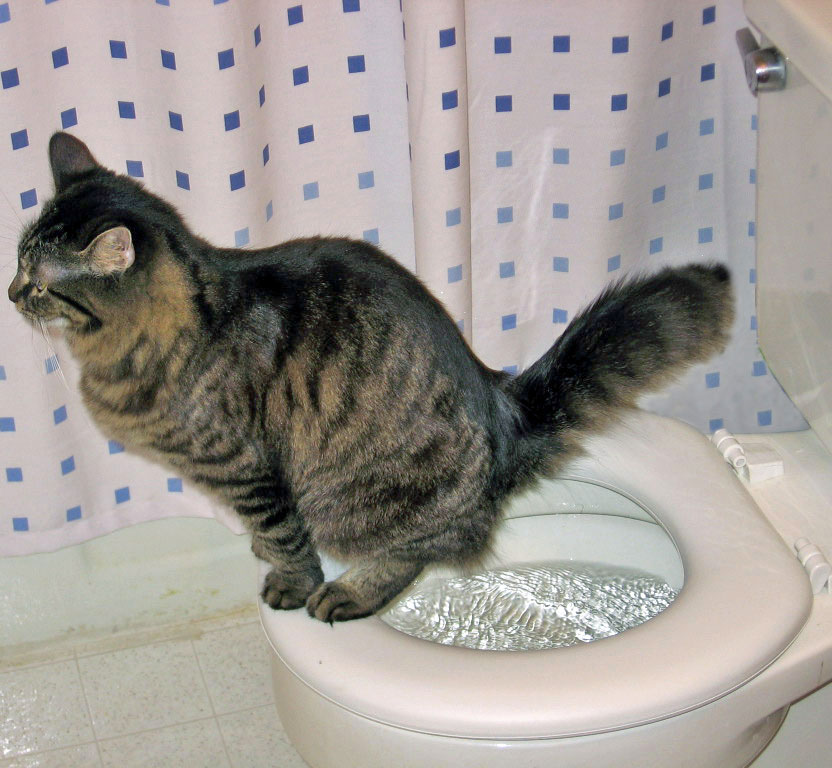Reasons Flushing Cat Poop Down Your Toilet Is Bad - Suggestions for Proper Handling
Reasons Flushing Cat Poop Down Your Toilet Is Bad - Suggestions for Proper Handling
Blog Article
Have you been trying to find selective information about How to Dispose of Cat Poop and Litter Without Plastic Bags?

Introduction
As cat proprietors, it's necessary to bear in mind exactly how we throw away our feline close friends' waste. While it may seem convenient to flush pet cat poop down the bathroom, this technique can have detrimental consequences for both the atmosphere and human health and wellness.
Alternatives to Flushing
The good news is, there are more secure and more accountable methods to get rid of pet cat poop. Think about the complying with alternatives:
1. Scoop and Dispose in Trash
One of the most usual method of getting rid of pet cat poop is to scoop it right into a naturally degradable bag and toss it in the trash. Make certain to use a devoted litter scoop and get rid of the waste promptly.
2. Usage Biodegradable Litter
Go with biodegradable pet cat clutter made from materials such as corn or wheat. These litters are eco-friendly and can be safely disposed of in the garbage.
3. Bury in the Yard
If you have a backyard, consider burying pet cat waste in a designated location away from vegetable gardens and water resources. Make sure to dig deep adequate to prevent contamination of groundwater.
4. Set Up a Pet Waste Disposal System
Invest in a family pet waste disposal system particularly designed for cat waste. These systems utilize enzymes to break down the waste, lowering odor and environmental effect.
Health Risks
In addition to ecological concerns, flushing cat waste can likewise posture health threats to humans. Feline feces might consist of Toxoplasma gondii, a bloodsucker that can trigger toxoplasmosis-- a possibly severe illness, particularly for expectant females and people with damaged immune systems.
Environmental Impact
Flushing pet cat poop introduces dangerous pathogens and parasites right into the water, presenting a significant threat to marine communities. These contaminants can adversely impact aquatic life and compromise water top quality.
Conclusion
Responsible pet possession extends past supplying food and shelter-- it additionally includes correct waste management. By avoiding flushing pet cat poop down the toilet and choosing alternative disposal methods, we can lessen our ecological impact and protect human wellness.
Why Can’t I Flush Cat Poop?
It Spreads a Parasite
Cats are frequently infected with a parasite called toxoplasma gondii. The parasite causes an infection called toxoplasmosis. It is usually harmless to cats. The parasite only uses cat poop as a host for its eggs. Otherwise, the cat’s immune system usually keeps the infection at low enough levels to maintain its own health. But it does not stop the develop of eggs. These eggs are tiny and surprisingly tough. They may survive for a year before they begin to grow. But that’s the problem.
Our wastewater system is not designed to deal with toxoplasmosis eggs. Instead, most eggs will flush from your toilet into sewers and wastewater management plants. After the sewage is treated for many other harmful things in it, it is typically released into local rivers, lakes, or oceans. Here, the toxoplasmosis eggs can find new hosts, including starfish, crabs, otters, and many other wildlife. For many, this is a significant risk to their health. Toxoplasmosis can also end up infecting water sources that are important for agriculture, which means our deer, pigs, and sheep can get infected too.
Is There Risk to Humans?
There can be a risk to human life from flushing cat poop down the toilet. If you do so, the parasites from your cat’s poop can end up in shellfish, game animals, or livestock. If this meat is then served raw or undercooked, the people who eat it can get sick.
In fact, according to the CDC, 40 million people in the United States are infected with toxoplasma gondii. They get it from exposure to infected seafood, or from some kind of cat poop contamination, like drinking from a stream that is contaminated or touching anything that has come into contact with cat poop. That includes just cleaning a cat litter box.
Most people who get infected with these parasites will not develop any symptoms. However, for pregnant women or for those with compromised immune systems, the parasite can cause severe health problems.
How to Handle Cat Poop
The best way to handle cat poop is actually to clean the box more often. The eggs that the parasite sheds will not become active until one to five days after the cat poops. That means that if you clean daily, you’re much less likely to come into direct contact with infectious eggs.
That said, always dispose of cat poop in the garbage and not down the toilet. Wash your hands before and after you clean the litter box, and bring the bag of poop right outside to your garbage bins.
https://trenchlesssolutionsusa.com/why-cant-i-flush-cat-poop/

I discovered that content about Don’t flush cat feces down the toilet when surfing the web. In case you enjoyed reading our page plz don't forget to share it. Thank you for taking the time to read it.
Click Here Report this page